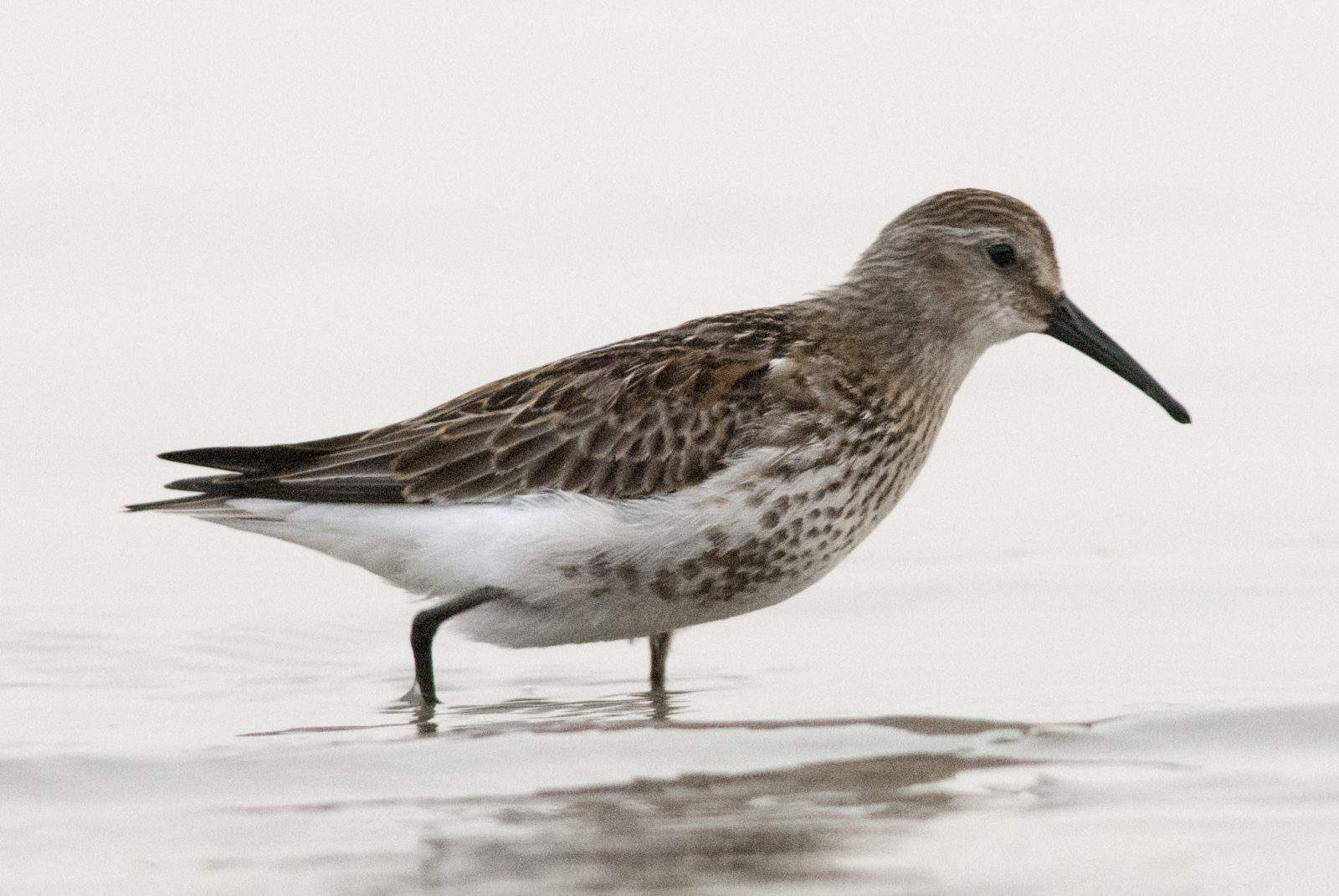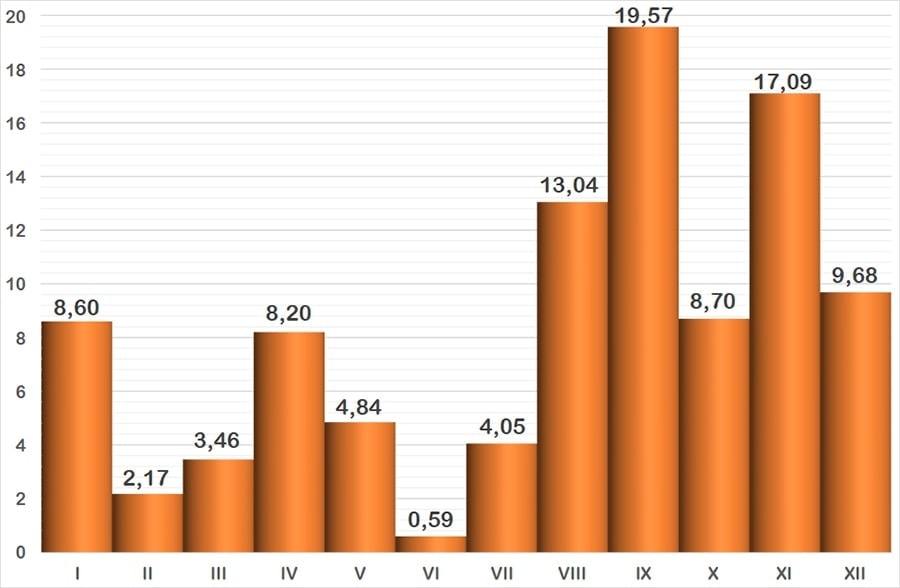It is the model of the Calidris family to be used as a comparison in the identification of the rest. Knowledge of its plumage and morphological characteristics is particularly useful to differentiate species. The legs are usually medium-sized (compared to the Curlew Sandpiper, which has longer legs, or to the Sanderling and Great knot, which have shorter legs), the bill, although it is notably variable (shorter or longer depending on the individual), is not as robust as that of the Great knot, as small as that of the Sanderling or the Little stint, nor as long, slender and curved as the Curlew sandpiper’s.
There are notable differences between winter and summer plumages, like the rest of the waders, but in summer plumage, and even in the transition or breeding moult, it is easily identifiable by the marked, ample and therefore striking black feather patch on the belly and the dark back with rusty reddish-brown feathers and black striped breast, as well as the inside of the dorsal feathers that gives them a scaly appearance.


